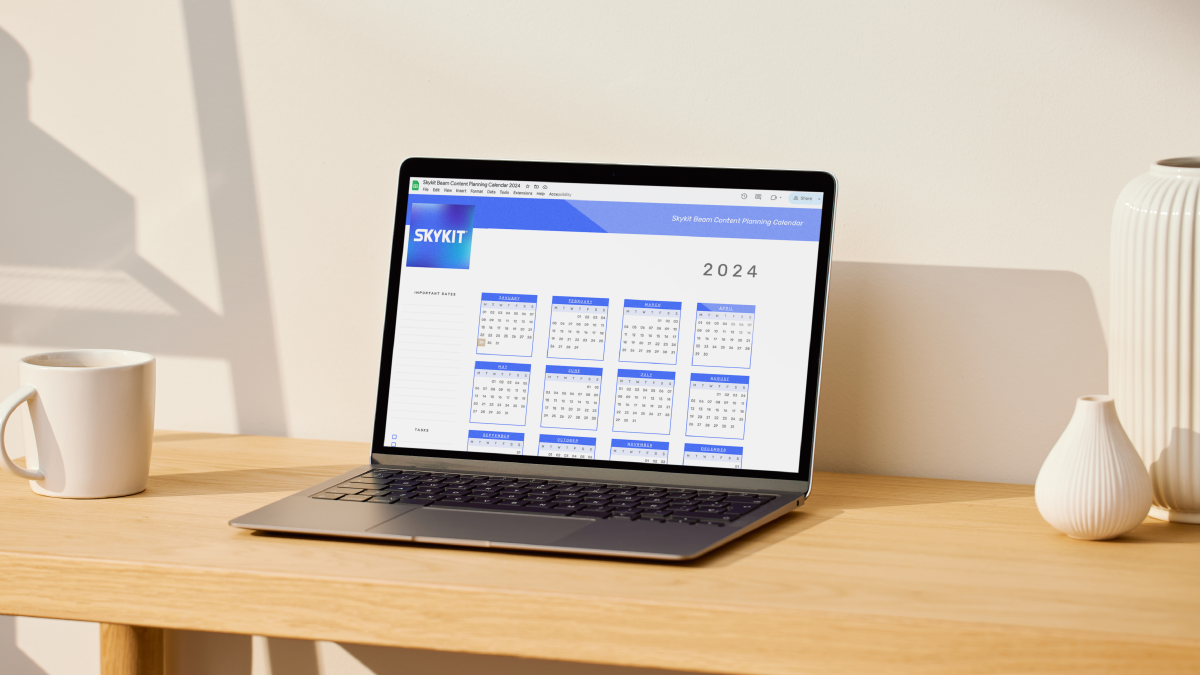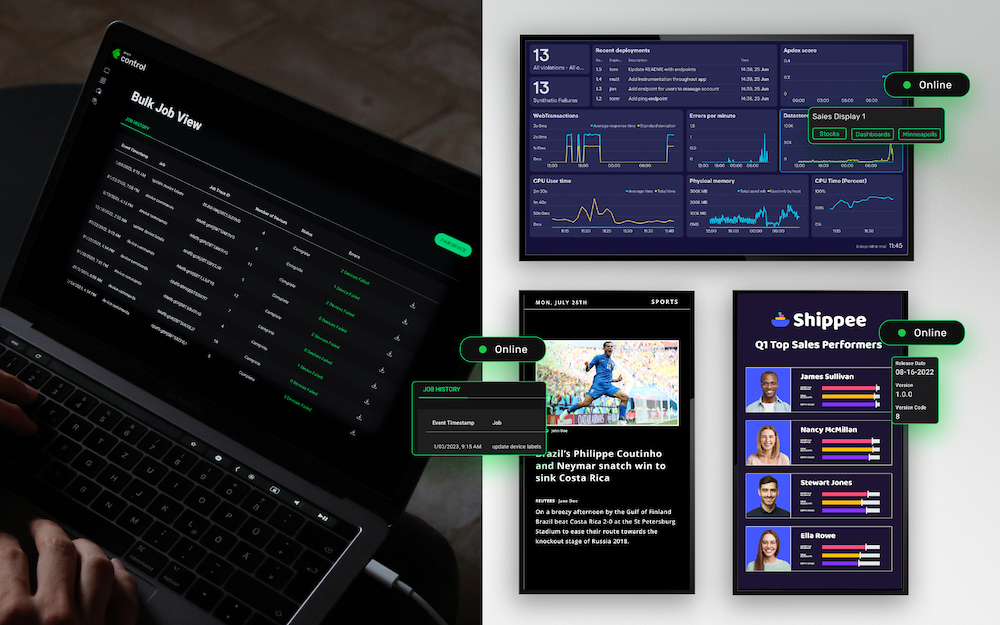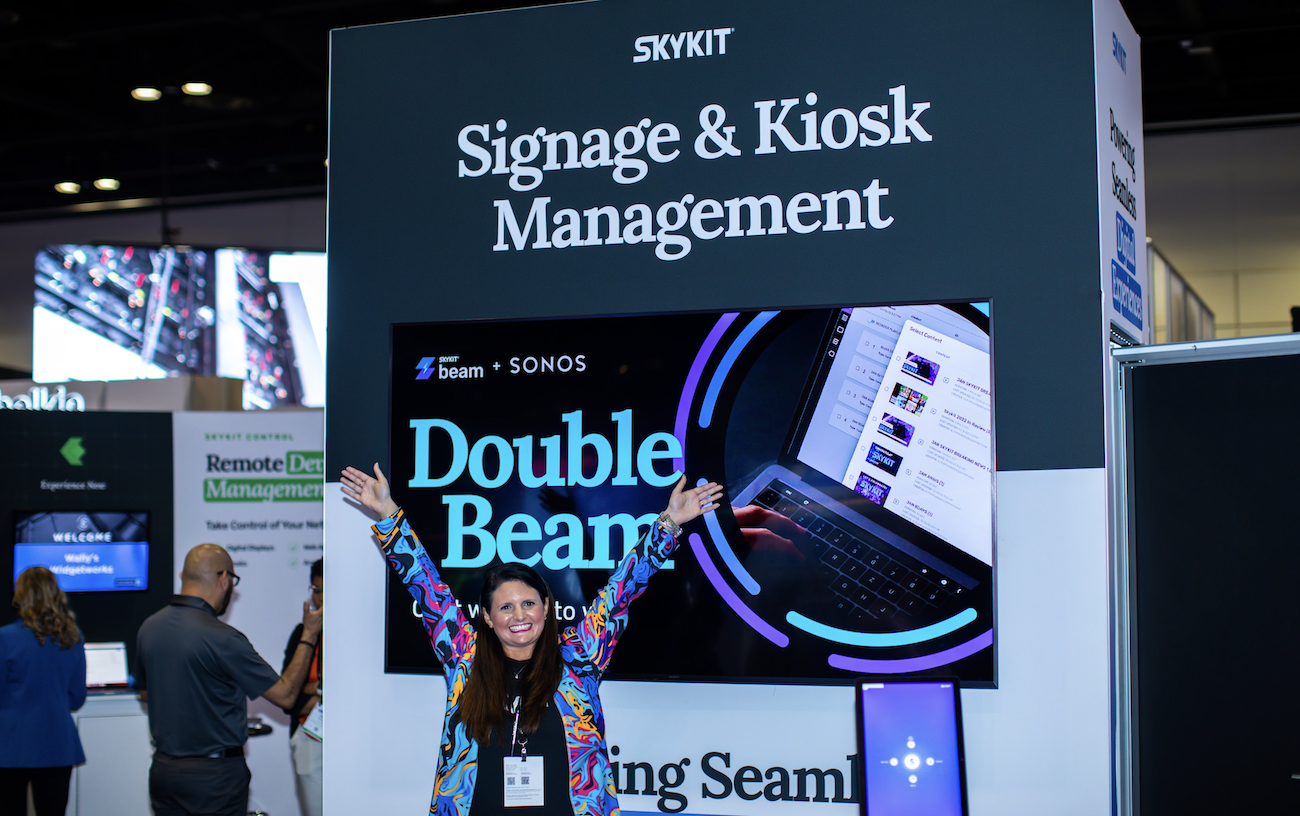Recently, a family member of mine had a long hospital stay after complications to a back surgery. Digital signage for healthcare is something that’s still catching on. Unfortunately the hospital I went to didn’t have a system for wayfinding or information for guests in the hospital.
Just finding his room in the large medical campus proved challenging.
The TV high in the corner of the room was stuck on a news channel. Other than that, there was no source of entertainment. I recall my family’s frustration as they tried to get clear information about his condition and the doctor’s recommendations.
The modern healthcare system holds frustrations for healthcare staff as well. Among digitized records, updating compliance requirements, and new training to do, there’s a lot of information to make sense of, and when things slip through the cracks patients might get hurt.
Digital signage offers solutions and benefits to both healthcare staff and patients, solving or offsetting many of the problems I’ve mentioned.
While digital signage for healthcare and hospitals in general is still a small sector of the overall digital signage market, it’s also growing quickly.
For Guests
Wayfinding
While in the past, healthcare facilities might have fit snugly into a single building, today medical campuses sprawl across acres of huge multi-story buildings.
Even the doctors sometimes get lost!
An interactive wayfinding kiosk is a great way to combat that confusion.
Wayfinding signage can help patients and visitors find their way to a specific office, the cafeteria, or wherever else they might need to go. This means fewer delayed appointments because people got lost.
On the staff end of things, digital signage could be used to track the locations of specialists and doctors in real-time. If an urgent situation developed with a patient, the nearest one could be summoned to respond.
Emergency alert
Speaking of urgent situations, a digital signage system is an excellent way to deliver emergency alerts to people within a healthcare facility.
Rather than a blaring alarm, which visitors might misinterpret, digital signage can communicate the nature of the emergency and provide information about how to respond. They can even display maps to the nearest exit routes, or be updated as the situation progresses.
This information should help people make an exit or find shelter safely, rather than in a panicked stampede.
Advertising
Digital signage can provide services to staff and visitors by displaying advertisements.
These can include:
- Tips for ongoing wellness
- Advertising network for health insurance providers, local restaurants, and others
- The daily menu from the cafeteria
- Items on sale at the pharmacy
- Ads for the gift shop
- Ads from other nearby businesses (such as florists, cinemas, etc.)
The audience a hospital offers covers a wide variety of demographics, and is frequently a captive one. Advertisements are sure to catch eyes and will likely direct customers to the advertisers.
Digital Signage For Hospital Patients
Provide entertainment
Odds are that if you’ve ever been to a doctor’s office or other medical facility, you’ve spent plenty of time sitting in waiting rooms.
The average wait time at a doctor’s office in 2014 was just over 19 minutes, but I’ve personally had to wait for over an hour more than once. You don’t want your in-patients getting impatient! (Pun intended and regretted.)
Having a digital sign to display messaging and entertainment is a great way to keep patients happy as they wait.
In fact, digital signage can cut perceived wait time by up to 35 percent.
This could be especially valuable in wings or facilities that serve pediatric patients.
When Mom or Dad’s phone runs out of batteries, having a screen playing age-appropriate educational or entertainment programming can keep a kid happy and save a parent’s sanity.
Provide education
Digital signs don’t only entertain, however. They can also provide valuable education and information to patients.
Modern digital signage systems can integrate with patient records and other databases to display vital information within a patient’s room, replacing the traditional whiteboard and television with one elegant solution.
Grandview Medical Center in Alabama has installed one such system. In addition to entertainment and weather information, patients, their families, and their care providers can view information such as diet restrictions, upcoming tests, medical goals, and assessments.
In fact, today’s patients prefer digital signage.
According to a recent survey, 75 percent of those viewing a digital sign in a hospital could recall at least one message.
They said that digital signage was “informative and educational, better than print as a means of distributing information, and that they learned something new from the screens.”
In other words, the screens provided healthcare information they could understand, remember, and use to make informed decisions about their own or their loved ones’ stays.
Having that sort of information at one’s fingertips is sure to decrease stress and the chance for costly mistakes.
Digital Signage For Hospital Staff
Provide vital information
As mentioned, digital signs in patient’s rooms that use a system integrated with patient records can provide a streamlined way to eliminate the need for charts and whiteboards.
Relevant information can be displayed in an organized manner, and easily and instantly updated by healthcare providers. Information gathered during the admission process (which may itself be automated digitally) can be entered directly into the system and accessed at touch screens by nurses, doctors, and so on.
Signs can also serve to provide information of all kinds in breakrooms, operating rooms, and more. This could include reminders about meetings, scheduling changes, and maintenance and construction.
They can also be used to issue alerts. For example, if a major accident occurred nearby and the hospital was about to receive an influx of patients, digital signs could alert the relevant floors and wings to begin preparation and be updated as new information came to light.
Compliance and training
Staff need to keep track of so many regulations and guidelines that human mistakes are probable. Training may fade from the memory in the midst of a busy shift.
It is possible, however, to reduce the odds by digitally displaying compliance guidelines at strategic locations within the facility.
For example, a sign near a sink could occasionally remind passers-by to wash their hand, playing an animation to demonstrate the correct technique.
Even during off-hours, digital signs can be put to good use. The same screens can have multiple functions.
All physicians are required to have a certain number of hours of continuing medical education every year. Much of this education takes the form of online courses and videos. Physicians and other staff in a clinic could use screens to watch educational videos when the facility’s closed.
Digital Signage for Healthcare: Creative Uses
These are all examples of fairly typical uses, but it’s possible to get quite creative with digital signage as well. Here’s three quick examples.
The Massachusetts General Hospital has installed a kiosk that collects and shares patients’ experiences. The concept, created by Dr. Annie Brewster of Health Story Collaborative, is based on the concept of empowering patients to feel less alone, and more heard. Patients can search for stories by “theme, diagnosis or perspective.”
Miami’s Nicklaus Children’s Hospital has a more light-hearted use for digital signage. They’ve installed a virtual, interactive aquarium to keep kids entertained. With a parent’s permission, the system can take a “Shell-fie” of a child and display his or her face on one of the fish swimming around. Children can also tap on the fish to make them react in amusing ways.
Gold Coast University Hospital is an extreme example of how valuable a digital wayfinding system can be. With over 8,000 rooms (some public, some private) spread through eight main buildings and 59 floors, varying hours for different departments and waiting areas, entire departments moving around regularly, it was clear that traditional signage would leave visitors and staff lost. Digital signage offered a solution that could be updated from day to day and in real-time, display in multiple languages, and allow certain areas to be found only by staff using a password.
Conclusion
Digital signage for healthcare is growing rapidly.
Traditionally, creating a fully integrated system is a lot of work and expense, but with the advances in digital signage software and technology, it’s become much more affordable. It’s a great way to take advantage of modern digital records-keeping systems and wayfinding technology in an elegant and useful way.
Say goodbye to smeared whiteboards, out-of-date maps, and faded posters.
Digital signage provides so many solutions and opportunities for healthcare facilities, aiding, educating, and entertaining patients and staff alike. It prevents costly mishaps and streamlines information.
Digital signage is the perfect companion for 21st century medicine.
How often have you gotten a little lost in a giant hospital and longed for simple directions? And for the medical professionals, has your place of work taken advantage of digital signage yet? Tell us about your experiences in the comments!



